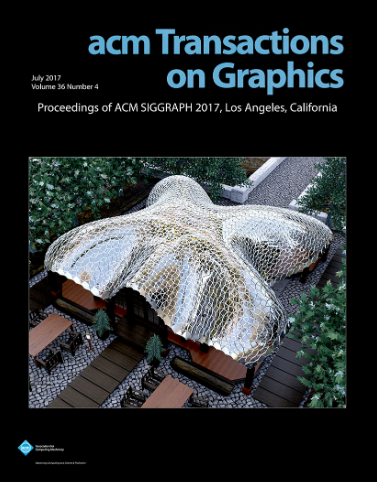Policy-Space Diffusion for Physics-Based Character Animation
IF 9.5
1区 计算机科学
Q1 COMPUTER SCIENCE, SOFTWARE ENGINEERING
引用次数: 0
Abstract
Adapting motion to new contexts in digital entertainment often demands fast agile prototyping. State-of-the-art techniques use reinforcement learning policies for simulating the underlined motion in a physics engine. Unfortunately, policies typically fail on unseen tasks and it is too time-consuming to fine-tune the policy for every new morphological, environmental, or motion change. We propose a novel point of view on using policy networks as a representation of motion for physics-based character animation. Our policies are compact, tailored to individual motion tasks, and preserve similarity with nearby tasks. This allows us to view the space of all motions as a manifold of policies where sampling substitutes training. We obtain memory-efficient encoding of motion that leverages the characteristics of control policies such as being generative, and robust to small environmental changes. With this perspective, we can sample novel motions by directly manipulating weights and biases through a Diffusion Model. Our newly generated policies can adapt to previously unseen characters, potentially saving time in rapid prototyping scenarios. Our contributions include the introduction of Common Neighbor Policy regularization to constrain policy similarity during motion imitation training making them suitable for generative modeling; a Diffusion Model adaptation for diverse morphology; and an open policy dataset. The results show that we can learn non-linear transformations in the policy space from labeled examples, and conditionally generate new ones. In a matter of seconds, we sample a batch of policies for different conditions that show comparable motion fidelity metrics as their respective trained ones.基于物理的角色动画策略空间扩散
使动作适应数字娱乐的新环境通常需要快速敏捷的原型设计。最先进的技术使用强化学习策略来模拟物理引擎中的下划线运动。不幸的是,策略通常在看不见的任务上失败,并且为每个新的形态、环境或运动变化调整策略太耗时。我们提出了一种新的观点,即使用策略网络作为基于物理的角色动画的运动表示。我们的策略是紧凑的,适合于单个运动任务,并保持与附近任务的相似性。这允许我们将所有运动的空间视为采样替代训练的多种策略。我们获得运动的记忆高效编码,利用控制策略的特征,如生成,对小环境变化的鲁棒性。从这个角度来看,我们可以通过扩散模型直接操纵权重和偏差来对新运动进行采样。我们新生成的策略可以适应以前看不见的角色,从而在快速原型场景中节省时间。我们的贡献包括引入共同邻居策略正则化来约束运动模仿训练中的策略相似性,使其适合生成建模;一个适应不同形态的扩散模型;以及一个开放的政策数据集。结果表明,我们可以从标记的例子中学习策略空间中的非线性变换,并有条件地生成新的变换。在几秒钟内,我们对不同条件下的一批策略进行采样,这些策略显示出可比较的运动保真度指标,就像它们各自训练的那样。
本文章由计算机程序翻译,如有差异,请以英文原文为准。
求助全文
约1分钟内获得全文
求助全文
来源期刊

ACM Transactions on Graphics
工程技术-计算机:软件工程
CiteScore
14.30
自引率
25.80%
发文量
193
审稿时长
12 months
期刊介绍:
ACM Transactions on Graphics (TOG) is a peer-reviewed scientific journal that aims to disseminate the latest findings of note in the field of computer graphics. It has been published since 1982 by the Association for Computing Machinery. Starting in 2003, all papers accepted for presentation at the annual SIGGRAPH conference are printed in a special summer issue of the journal.
 求助内容:
求助内容: 应助结果提醒方式:
应助结果提醒方式:


